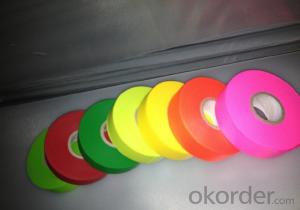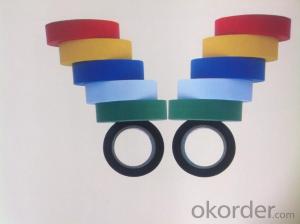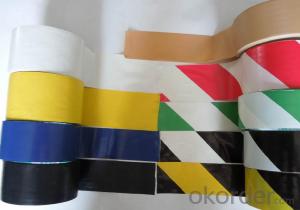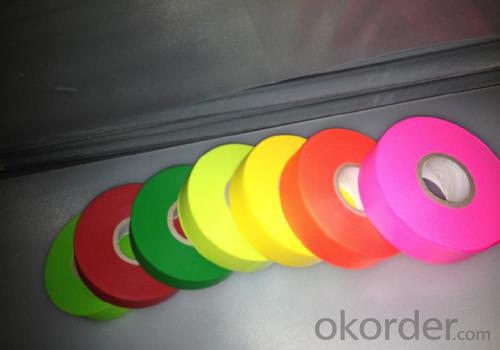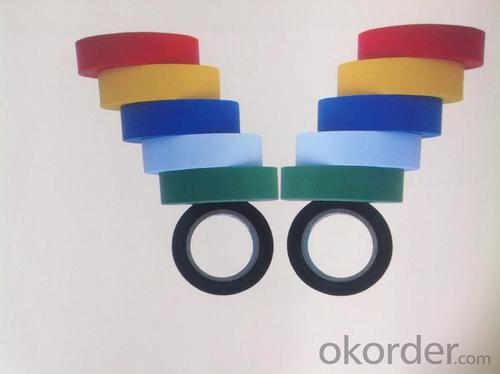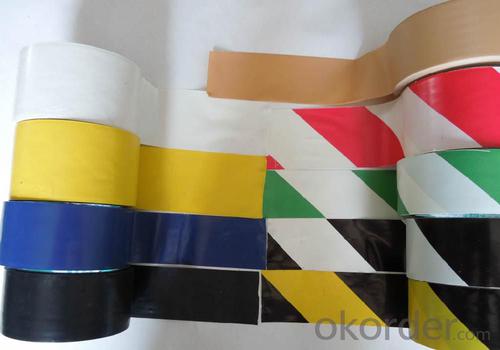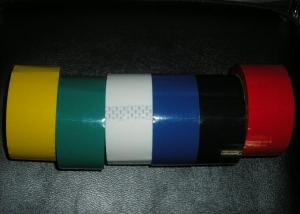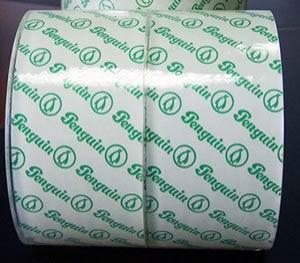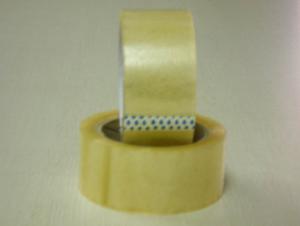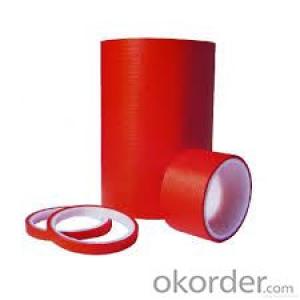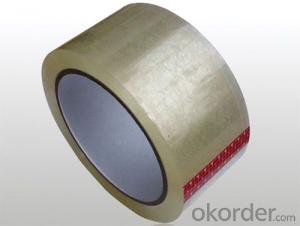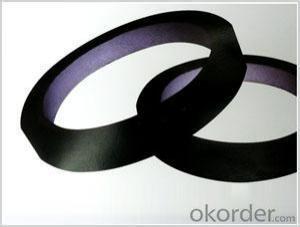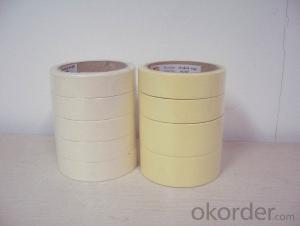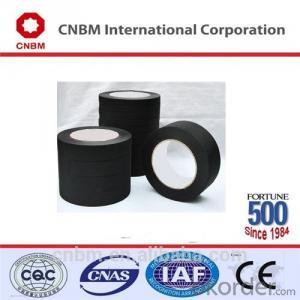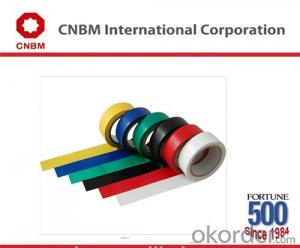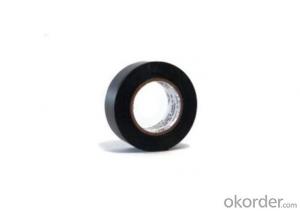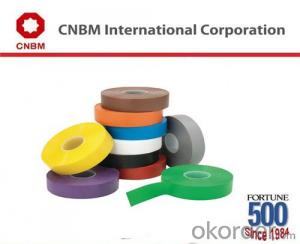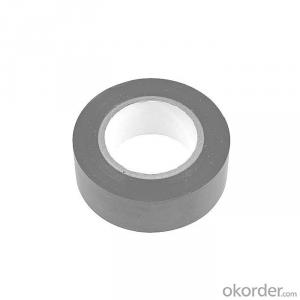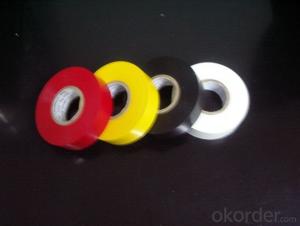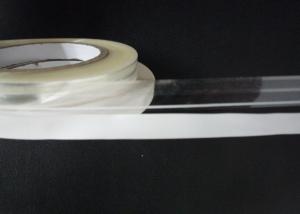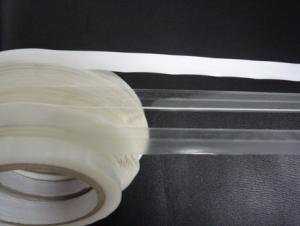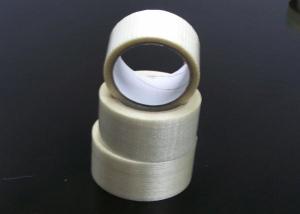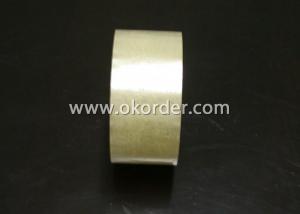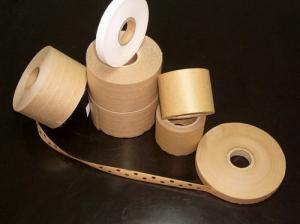Voonik Packaging Tape - PVC Electrical Insulation Tape A Grade Flame Resistant
- Loading Port:
- China main port
- Payment Terms:
- TT OR LC
- Min Order Qty:
- 1000 roll
- Supply Capability:
- 10000000 roll/month
OKorder Service Pledge
OKorder Financial Service
You Might Also Like
Introduction of PVC Tape
PVC tapes are made of soft pvc film coated with rubber pressure-sentitive adhesive.
Application of PVC Tape
PVC tapes are widely used in auto harness, wrapping of wire, and insulation protection. It is the main insulation material of automobilehousehold electrical apparatus.
Advantage of PVC Tape
Corrosion protection for metal piping systems above and below ground.
Corrosion protection for fittings and joints on mill coated pipe.
Corrosion protection of electrical conduit & fittings.
Resists corrosive action by salt water, soil acids, alkalies and salts.
Prevents dielectric corrosion between buried steel pipe and soil minerals.
Pictures of PVC Tape

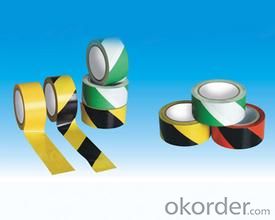
Specification of PVC Tape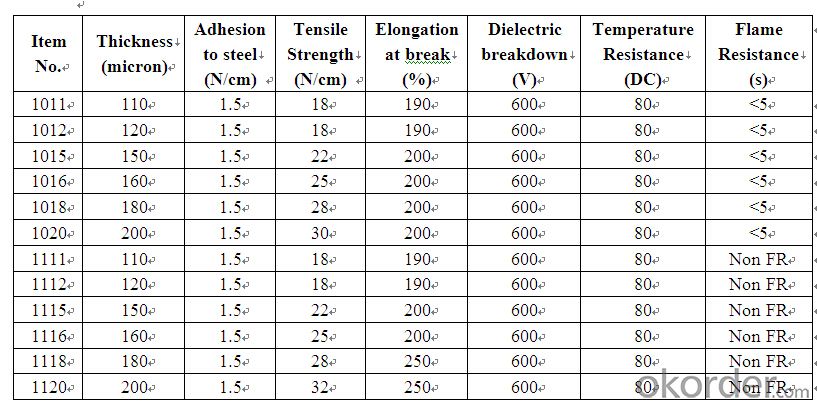
FAQ
1. What is the range of your products?
So far, we manufacture various kinds of double sided adhesive tape, masking tape, kraft tape and BOPP packing tape. To better meet your needs, we can also source other adhesive tapes for you if it is appropriate to do so.
2. What's the lead time for delivery?
We ensure you a prompt delivery of the goods. We do not stock any of the goods. The production cycle time of 1*20FCL is 2-3 weeks.
3. How many carriers does your double sided adhesive tapes have?
There are many carriers that our double sided adhesive tapes based on, which are tissue, PET, BOPP, PE foam, EVA foam.
4.Can you accept the cooperation way of OEM?
Upon receipt of formal authorization, we can accept OEM processing.
- Q: The tape is very loud and loud when it is packed. Would you like to ask me if I have sold silent tape? Or silent tape? Where can I sell it? Thank you
- This silent tape is not available at the moment. If you want a sound spot, try a sticky tape!
- Q: Is packaging tape transparent?
- Yes, packaging tape is usually transparent.
- Q: Does packaging tape come in different allergen-free options?
- Yes, packaging tape is available in various allergen-free options. Many manufacturers offer packaging tapes that are specifically designed to be hypoallergenic and suitable for individuals with allergies or sensitivities. These tapes are typically free from common allergens such as latex, gluten, and certain chemical irritants. It is important to check the product description or contact the manufacturer to ensure that the packaging tape meets your specific allergen-free requirements.
- Q: Can packaging tape be used for sealing packages with hazardous materials?
- Using packaging tape to seal packages containing hazardous materials is not recommended. It is essential to employ specific packaging and sealing techniques to guarantee the safety of individuals who handle and transport such packages. To comply with regulations, hazardous materials should be sealed using approved methods, such as specialized hazard tape, tamper-evident seals, or specific labels for hazardous materials. These methods serve to clearly indicate the package's contents, prevent any leakage or spillage, and offer the necessary warnings and precautions for those involved in the transportation and handling of hazardous materials.
- Q: Can packaging tape be used for sealing glass containers?
- Yes, packaging tape can be used for sealing glass containers. However, it may not provide the same level of air-tightness and security as specialized glass container seals, such as rubber gaskets or silicone seals. Additionally, it is important to ensure that the tape is securely adhered to the glass surface to prevent any leakage or damage to the contents.
- Q: Can packaging tape be used for sealing containers with liquids?
- Yes, packaging tape can be used for sealing containers with liquids. However, it is important to note that not all packaging tapes are designed to withstand contact with liquids for extended periods of time. If you are sealing containers with liquids, it is recommended to use packaging tape that is specifically designed for this purpose, such as water-resistant or waterproof tape. These tapes are generally more durable and have enhanced adhesive properties to ensure a secure seal and prevent leakage. Additionally, it is advisable to properly clean and dry the surface of the container before applying the tape to ensure optimal adhesion.
- Q: How long does packaging tape last?
- The durability of packaging tape is heavily influenced by different factors including the tape's quality, the conditions it encounters, and its storage method. In general, packaging tape has the potential to endure for several months to a few years. Nevertheless, it is crucial to acknowledge that as time goes on, the adhesive qualities of the tape might start to diminish, resulting in a loss of its adhesive strength. Additionally, exposure to extreme temperatures, moisture, and sunlight can expedite the tape's decay. Hence, it is advisable to employ packaging tape within its recommended shelf life and keep it in a cool and dry area to guarantee its efficacy when required.
- Q: Does packaging tape come in different thicknesses?
- Yes, packaging tape does come in different thicknesses. Packaging tape is available in a variety of thicknesses to accommodate different needs and requirements. Thicker tapes are typically more durable and are suitable for heavy-duty applications where extra strength and resistance are necessary. On the other hand, thinner tapes are often used for lighter packages or general everyday use. The choice of thickness depends on the weight and size of the package being secured, as well as the level of reinforcement desired.
- Q: How does packaging tape perform when exposed to chemicals or solvents?
- Packaging tape generally performs well when exposed to chemicals or solvents, but the specific performance may vary depending on the type of tape and the nature of the chemicals or solvents involved. Most packaging tapes are designed to have good resistance to common household chemicals such as cleaning agents, oils, and water-based solvents. They are typically made from materials like polypropylene or PVC, which have excellent chemical resistance properties. This allows the tape to maintain its adhesion and integrity even when exposed to moderate amounts of chemicals or solvents. However, it is important to note that some aggressive chemicals or solvents, such as strong acids or organic solvents, may have a detrimental effect on the performance of packaging tape. These highly corrosive substances can cause the tape to degrade, lose its adhesive properties, or even dissolve completely. To ensure optimal performance, it is recommended to check the specific chemical resistance properties provided by the manufacturer of the packaging tape. They may offer guidance on the suitability of the tape for different types of chemicals or solvents. Additionally, it is advisable to conduct small-scale tests or trials to assess the tape's performance when exposed to specific chemicals or solvents before using it for critical packaging applications. In summary, packaging tape generally performs well when exposed to common household chemicals or solvents. However, its performance may be compromised when exposed to aggressive or corrosive substances. It is important to consult the manufacturer's guidelines and conduct tests, if necessary, to ensure that the tape is suitable for the specific chemical or solvent it will be exposed to.
- Q: Can packaging tape be used for sealing foam?
- Yes, packaging tape can be used for sealing foam. Packaging tape is commonly used for sealing boxes and packages, but it can also be used effectively to seal foam. When using packaging tape to seal foam, it is important to ensure that the tape is securely adhered to the foam surface to create a tight seal. This can be achieved by applying pressure to the tape after it has been applied. Additionally, it is recommended to use a tape that is specifically designed for sealing foam, as these tapes often have stronger adhesive properties and are more resistant to temperature changes and moisture. Overall, packaging tape can be a convenient and effective option for sealing foam.
Send your message to us
Voonik Packaging Tape - PVC Electrical Insulation Tape A Grade Flame Resistant
- Loading Port:
- China main port
- Payment Terms:
- TT OR LC
- Min Order Qty:
- 1000 roll
- Supply Capability:
- 10000000 roll/month
OKorder Service Pledge
OKorder Financial Service
Similar products
Hot products
Hot Searches
